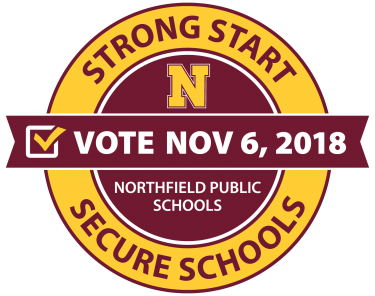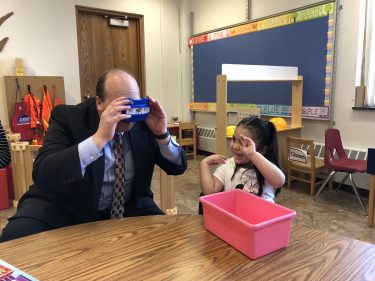This post is the third in a series of three about the November 6, 2018 bond referendum election. You can read the first post here and the second post here.
After the ambitious bond referendum failed in November 2017, the District sought  additional feedback from community members about its space needs. Board members and administrators listened intently through scores of individual conversations with community members. We listened as a group of approximately 30 district residents engaged in discussion as part of a Facilities Action Team. We listened to the almost 400 people who engaged in an online Thoughtexchange dialogue. Those conversations uncovered three clear themes:
additional feedback from community members about its space needs. Board members and administrators listened intently through scores of individual conversations with community members. We listened as a group of approximately 30 district residents engaged in discussion as part of a Facilities Action Team. We listened to the almost 400 people who engaged in an online Thoughtexchange dialogue. Those conversations uncovered three clear themes:
- Focus on elementary facility needs and early childhood programming.
- Take common-sense steps to make our schools more secure while maintaining a welcoming learning environment.
- Make it cheaper for taxpayers.
In this post, I will focus on the benefits of early learning.
Why is early learning important?
Early learning is essential to help ensure every child is ready for Kindergarten. Minnesota is identified as having one of the best public school systems in the nation. However, it is also recognized as having one of the worst achievement gaps in the country. The achievement gap is the difference in academic performance between students of lower socioeconomic status and those of high socioeconomic status. We have also learned the achievement gap is present before children reaching Kindergarten age. Helping students engage in high-quality pre-school can give them the great start they need for long-term success.
It isn’t just about scholastic success. The University of Minnesota’s Arthur Rolnick studied the economic benefits of early learning as a researcher at the Minneapolis Federal Reserve. Dr. Rolnick took on the project at the behest of some friends, thinking his resulting review of the research would satisfy these friends and sit on shelves never to be heard about again. He admits he was surprised about how wrong that presumption proved to be. In addition to the “moral” imperative of providing our youngest learners with educational opportunities, he found a clear connection between high quality early learning programs and a significant economic return — Dr. Rolnick’s research focuses on the “internal rate of return.” He explains that seven percent on this indicator tends to be the expected standard. His research shows that investment in high quality early learning results in between 16%-18% internal rate of return. In short, investing in high quality early learning is an investment that twice the expected standard investors often use as a measuring stick.
Here are two other recent articles about the benefits of early learning:
- University of Minnesota economist has seen that investment in kids yields real economic returns (Star Tribune)
- Minnesota needs to bring new energy to preschool efforts (MinnPost)
What is early learning?
 In the context of this bond referendum, early learning refers to four District programs:
In the context of this bond referendum, early learning refers to four District programs:
- Early Childhood Family Education (ECFE): This programming involves parents and their young children. It includes parenting information and focuses on the development of infants and toddlers.
- Early Childhood Special Education (ECSE): This programming supports children identified with a disability between birth and age five. This program includes individualized instruction based on the child’s disability and often includes integration with non-disabled peers through the District’s pre-school program.
- Licensed Child Care: Northfield Public Schools operates a licensed child care center for children from birth through age five. This program currently has a waiting list of more than two dozen children.
- Hand-in-Hand Pre-School: This program offers classes for three and four-year-old children. This program is one of two in Northfield that has achieved the prestigious Four Star Parent Aware rating that qualifies it to accept early learning scholarships from the State of Minnesota. This program also has waiting lists at this time.
How will the bond referendum address this?
Northfield Public Schools needs additional space to ensure every student in the community has the opportunity to attend a high-quality preschool and use a scholarship if they need one and can qualify for it. The bond referendum would consolidate the four programs listed above into one location in a repurposed Greenvale Park Elementary School. This co-location could provide the benefit of “wrap-around care” so that parents can have their children attend child care and pre-school programs in the same location. It also would provide an opportunity for parents to participate in programs to support their learning (like English classes for adult learners or Adult Basic Education courses) while their children attend pre-school. Repurposing the current Greenvale Park Elementary School as a district-wide early childhood center would provide efficiency, room for growth, and an opportunity for families to learn together in one location. It will be our best chance to address the achievement gap before it begins.
Finally — VOTE
Democracy is not a spectator sport. A bond referendum is one of the last instances of direct democracy. It is a specific question presented to the voters. They provide the District with a straight up-or-down vote. Please make sure to participate in this election. Contact me directly at 507.663.0629 or by email if you have any final questions about the November 6, 2018 bond referendum.
